When is it better to dig horseradish so that it is tasty and well kept?
You can dig horseradish in the garden at different times. Exactly when to extract the root depends on how the plant will be used. In cooking, not only rhizomes are used, but also horseradish leaves. The vegetable is also used for medical and cosmetic purposes.
Cleaning times
Traditionally, horseradish is dug up in late autumn, shortly before the snow falls. In the middle lane, the harvest takes place at the end of October. By this time, the leaves will have time to turn yellow and lie on the ground, which will indicate the redistribution of nutrients - they will go to the rhizome.
By this time, the root will be well-ripe, juicy, and high in sugars. Under optimal conditions, it can be stored for several months.
They start cleaning on a dry, fine day. It looks like this:
- By sticking the shovel as deep as possible, the plant, along with the leaves and a lump of earth, is pryed up and removed to the surface.
- If the ground is wet, the root crop is allowed to dry for several hours right on the garden bed, after which it is carefully cleaned, being careful not to damage the dense skin.
- The leaves are cut with a sharp knife, leaving stumps 2-3 cm long for better preservation of the root.
It is best to store the rhizomes in the basement, cellar. A small amount of root vegetables can be refrigerated.
Optimum storage conditions are 1–2 ° C and humidity around 80%. Before laying in storage, the crop is placed in boxes, sprinkling the layers with river sand.
You can also dig up the root crop in the spring, after the snow melts. It is necessary to have time with the work until the moment when the plant starts to grow. Spring digging is mainly used to propagate horseradish by dividing the root or in order to transplant a crop to a new location. The root vegetable has a sharper and more bitter taste at this time of year.
In principle, you can also dig up horseradish in the summer - in July or August, when the time comes for harvesting. In this case, the leaves are washed and placed in jars when canning, and the rhizome is used to prepare sauces and seasonings. For a while, it can be kept fresh on the bottom shelf of the refrigerator, but you need to remember that incompletely ripe horseradish will not be stored for a long time.
The benefits and uses of horseradish
The substances contained in the leaves and rhizome of horseradish eliminate fermentation processes in the digestive tract, lower blood sugar levels, have an anthelmintic effect, prevent the occurrence of edema, eliminate bleeding gums, and promote phlegm discharge during a cold.
The leaves and roots of the plant are used to prepare ointments, tinctures, compresses, which are used in the treatment of joint diseases, as a prophylaxis for baldness. Pickled horseradish plays the role of a natural aphrodisiac, improves male potency. Thanks to its high potassium content, the spicy vegetable strengthens the heart muscle, making it more enduring.
Despite all its advantages, horseradish has some contraindications for eating:
- Refrain from using it as a seasoning should be those who have seriously impaired liver, kidney, thyroid function.
- You should not eat a spicy vegetable for people with diseases of the digestive tract in the stage of exacerbation and for those who have an allergic reaction from this plant.
- You can not include horseradish in your diet for pregnant and lactating women, it is also not given to children under 4 years old.
The peculiarity of making horseradish seasoning is that it is not subjected to heat treatment, otherwise most of the benefits, specific taste and aroma will be lost. Horseradish is most often eaten fresh, grated.
The root can be dried by peeling and cutting into thin slices. Drying is carried out in special dryers or in an oven at a temperature of 50 ° C. Dried slices are crushed to a powdery state and stored in an airtight container. In the future, the powder is added to sauces and dressings served with all types of meat and fish.
Horseradish dug up in autumn has the best taste and maximum benefits. The root crop must be allowed to fully ripen, which is why it is left in the ground for as long as possible, digging out before the onset of frost. If necessary, you can remove the rhizome in spring or summer and use it for processing or store it in the refrigerator for a short time.
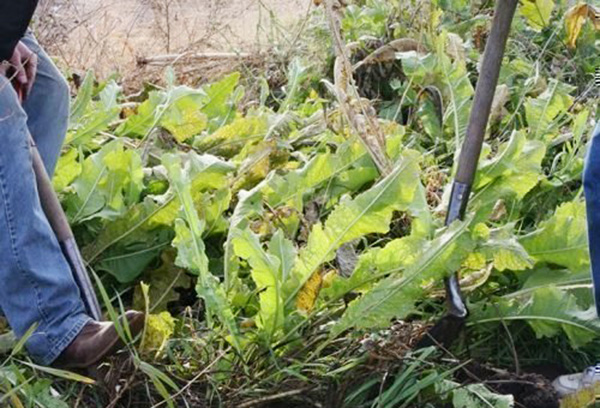
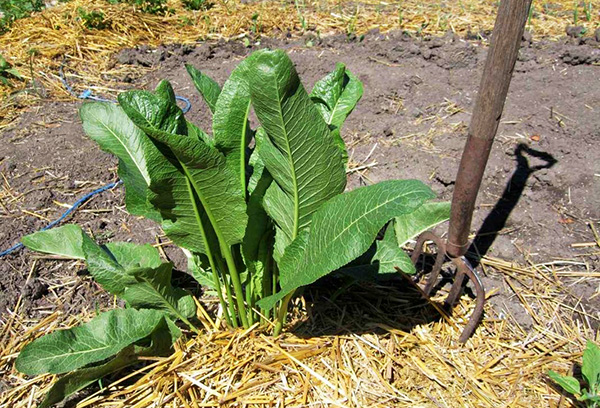
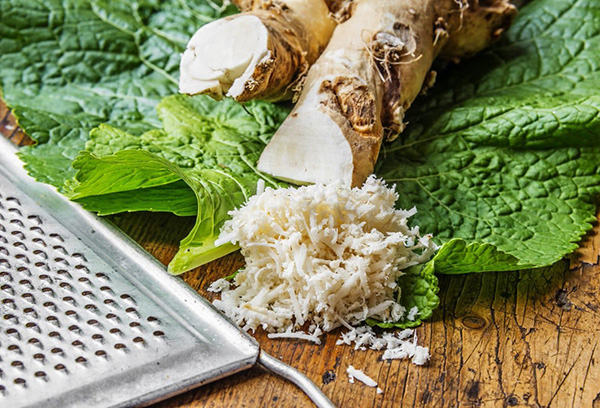

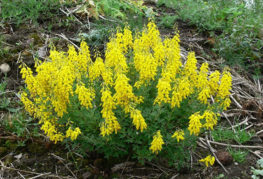
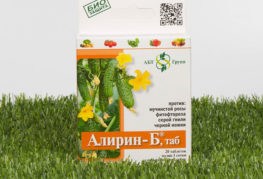
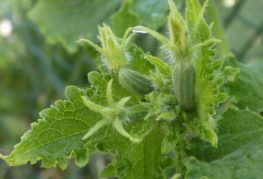
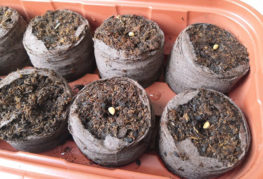

and will be published shortly.